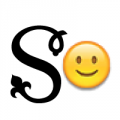Unicase germandbls

Nick Shinn
Posts: 2,320
Comments
-
Not a german, but if capital eszett is already a (debatable) thing, then surely unicase eszett must be a thing. It's the kind of oddity that fits perfectly with the genre, I'd say.3
-
I like the capital eszett even though in this situation I would use the double S.0
-
This was discussed several times on the board, if I'm not mistaken.
 Since unicase is mostly, like smallcaps, based on the capitals, better make a version based on the cap Eszett and leave the double S as two normal SS to be typed out. This is what I would do. Better more than sorry. 0
Since unicase is mostly, like smallcaps, based on the capitals, better make a version based on the cap Eszett and leave the double S as two normal SS to be typed out. This is what I would do. Better more than sorry. 0 -
Thanks Jasper, “oddity for oddity” —and if typographers are uncomfortable with the capital form, they can always type out two s’s.0
-
As a former German, I wholly welcome the capital Eszett. As a former German I can also say that it's weird as heck.I include one in all my fonts now, and let the users figure out what they want to use.
 3
3 -
The old rules in Duden (capital ß not available):
- use SS for ß in capital letters
- to avoid confusion use SZ, e.g. MASSE (EN: mass) versus MASZE (EN: measures)
Swiss German uses always ss instead of ß by Swiss rules. But that's not true in modern texts in the web.
New rules in Duden, if capital ß is not available:
- use lower case ß in capital letters
My recommendation for font designers: provide the capital ß, if possible. It's a decision of the user, which variant is preferred.
In historical typography we can find all shapes and practices for ß. Even longs_s ligature and longs_z ligature (3-shaped z) in the same font on the same page.1 -
Thanks Helmut, I have indeed been including capital ß in all my typefaces since it became a Unicode character—but my concern here is for unicase.
As Oliver’s specimen shows, there is certainly a history of unicase forms in German (not to mention Bayer’s bent pipe Bauhaus design). So I wonder, is it now viewed as an historical oddity, or what? And how might the new recognition of cap ß affect unicase?0 -
Nick Shinn said:As Oliver’s specimen shows
NB: That's not an old specimen, these are fonts I've recently revived To my knowledge, none of the originals featured a capital Eszett; these are my own designs. 0
To my knowledge, none of the originals featured a capital Eszett; these are my own designs. 0 -
IMHO it's easy: If you map the codepoints of lowercase and uppercase letters to the same glyph in your font, then also map U+00DF LATIN SMALL LETTER SHARP S (Lowercase_Letter) and U+1E9E LATIN CAPITAL LETTER SHARP S (Uppercase_Letter) to the same glyph. As simple as that. Problem solved. Don't restrict the user.Nick Shinn said:Thanks Helmut, I have indeed been including capital ß in all my typefaces since it became a Unicode character—but my concern here is for unicase.
Sure, Unicode defines upper case for LATIN SMALL LETTER SHARP S to be 'SS', but this is application level and not font level.
Depending on your design idea it can make sense to provide discretionary ligatures for 'SS' and 'SZ' at users choice, but only for the sequence \s + ZWJ + \s resp. \s + ZWJ + \z.
In history a few metal fonts had a capital eszett for e. g. company names. It was very seldom. As Oliver Weiss wrote there are no (known) samples of capital eszett in the original fonts of Art Nouveau. But I wouldn't be surprised if some of the famous designers of this period created and used one somewhere. Many posters and front pages of periodicals in this period are single-shot designs with variations of shapes.2 -
The historical examples I've seen seem to employ Eszett opportunistically, in book titles and other highly formatted text where SS or SZ may have been too wide.1
-
Oliver Weiss said:That's not an old specimenYes, I realize that, but the unicase (minuscule forms of m and n in an otherwise majuscule setting) were in the original.
But perhaps I am being Anglocentric in describing m and n as minuscule forms, because they are the norm in Fraktur majuscules!
0 -
@Nick Shinn I see what you mean. But as you say, these letterforms are generally based on Fraktur, so you only get the, er, illusion of unicase. With the exception of the topmost one (Maria Theresia Caps), they all have a lower case.0
Categories
- All Categories
- 46 Introductions
- 3.9K Typeface Design
- 486 Type Design Critiques
- 563 Type Design Software
- 1.1K Type Design Technique & Theory
- 655 Type Business
- 859 Font Technology
- 29 Punchcutting
- 520 Typography
- 119 Type Education
- 324 Type History
- 77 Type Resources
- 112 Lettering and Calligraphy
- 33 Lettering Critiques
- 79 Lettering Technique & Theory
- 557 Announcements
- 94 Events
- 114 Job Postings
- 170 Type Releases
- 178 Miscellaneous News
- 276 About TypeDrawers
- 54 TypeDrawers Announcements
- 120 Suggestions and Bug Reports




